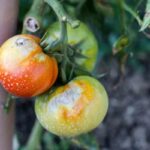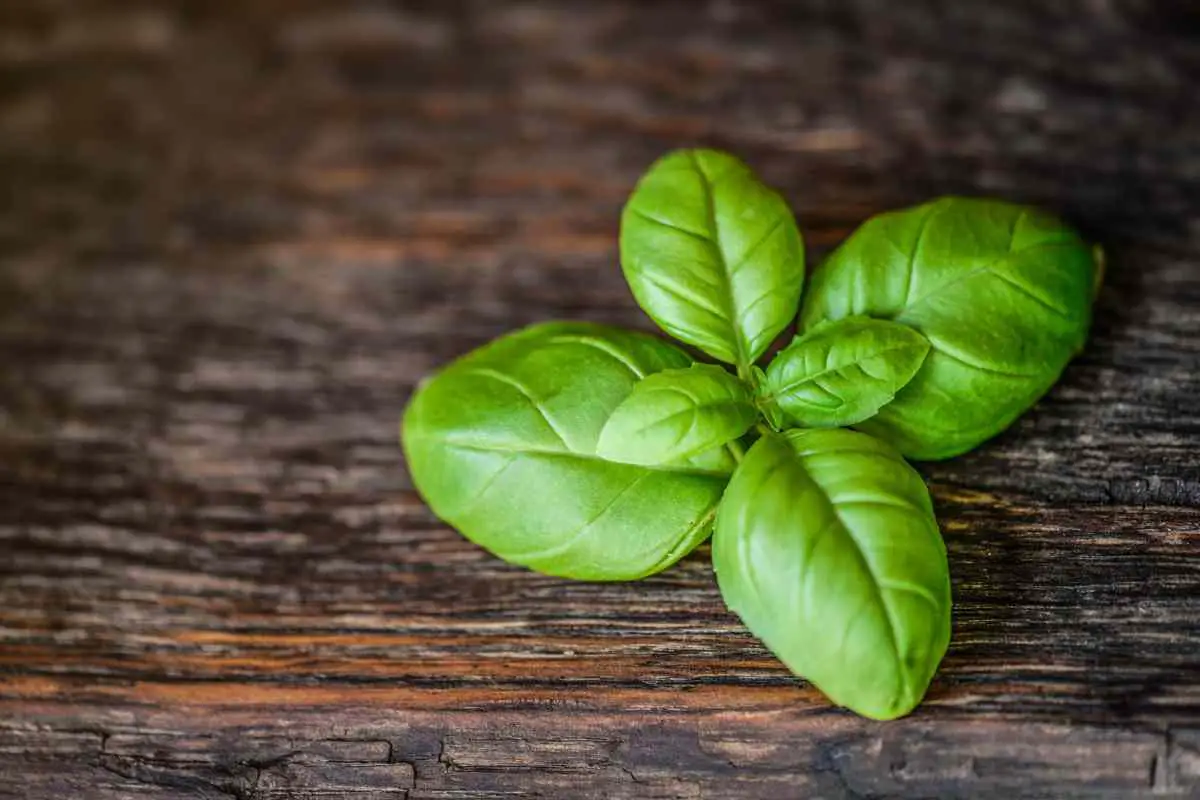Tomato leaf diseases arise from moisture issues and the presence of bacteria and fungus.
Diseases include blight, speck, spotting, mold, mildew, wilt, and canker, and you can identify them each by their distinct colors and patterns.
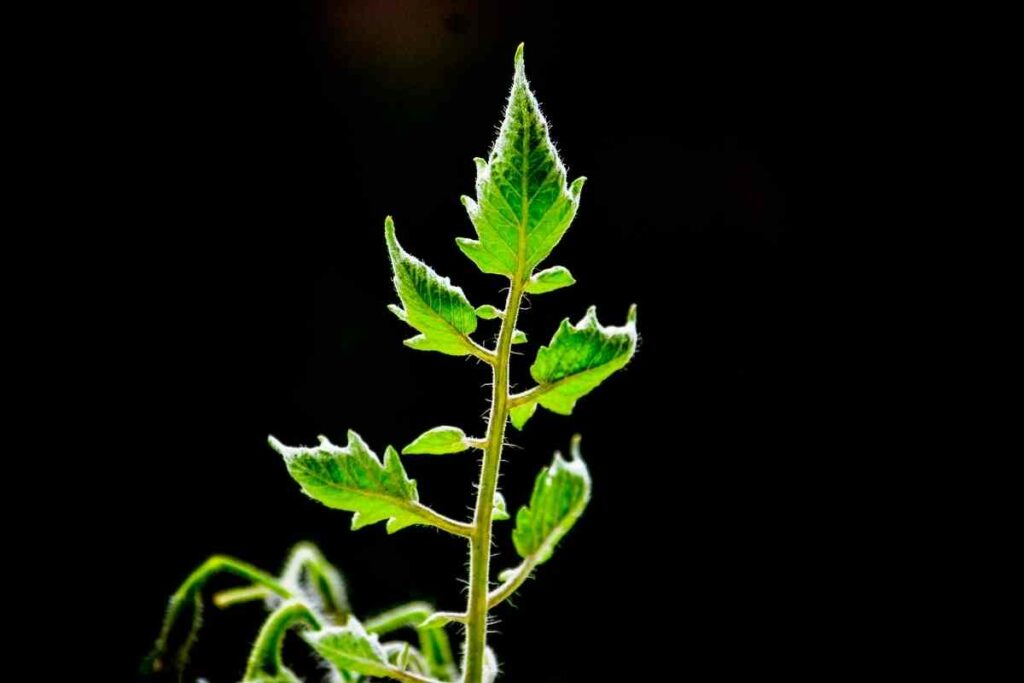
In order to prevent and treat tomato leaf disease, you can stay on top of proper irrigation, fungicide use, using resistant tomato plant varieties, and more.
Keep reading as we explore the different types of tomato leaf diseases and how to identify, prevent, and treat them.
Table of Contents
What are tomato leaf diseases?
Tomato leaf diseases are caused by different types of pathogen and fungal infections, such as the water mold pathogen Phytophthora infestans, which is involved in late blight.
These diseases can stick to the foliage causing eventual leaf drop, or they can spread to the stems and fruit.
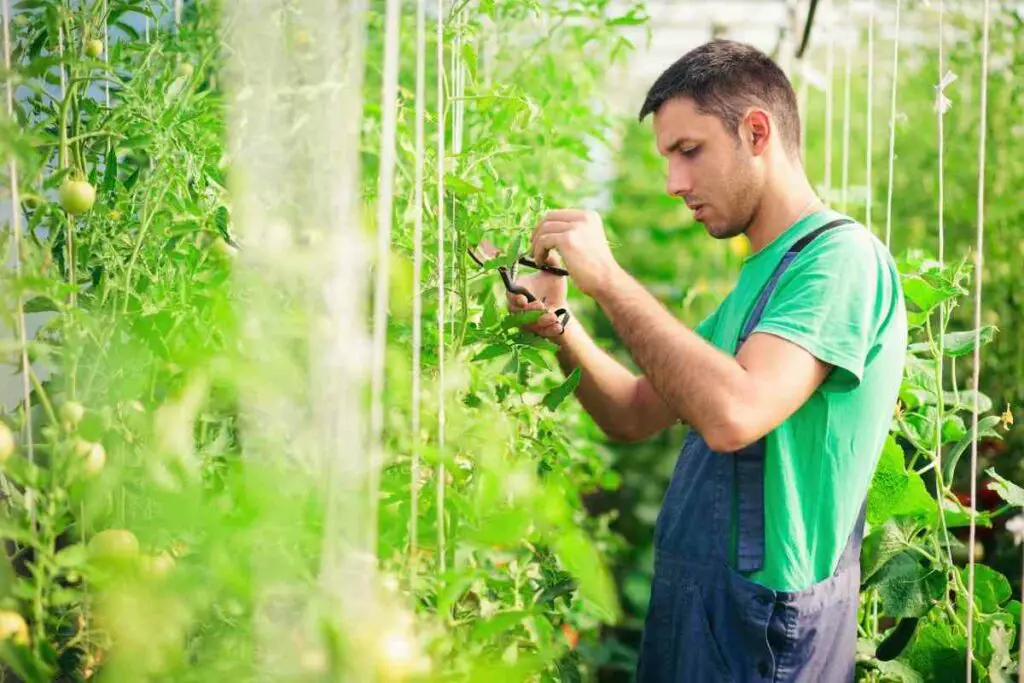
The presence of tomato leaf disease often arises due to too-moist conditions from weather, dew accumulation, and overwatering. However, they can also develop in too-dry conditions.
This causes the leaves to develop markings and discoloration as they rot and spread disease throughout the plant, compromising its health.
Leaf diseases are different from:
- leaf viruses
- damage from insect infestations
- and physiological disorders
However, these other maladies can negatively affect a tomato plant in similar ways.
What diseases can tomato leaves develop?
Tomato leaf diseases develop in certain adverse conditions, such as too much or too little moisture, the presence of fungus, and other scenarios.
The following table explains the basics of each different type of tomato leaf disease to be aware of.
| Tomato Leaf Disease | Characteristics |
|---|---|
| Bacterial Speck | A bacterial disease on tomato leaves that increases with moisture from rain and overwatering, indicated with necrotic tissue specks |
| Powdery Mildew | Mildew causing yellow spots and white-gray powder that kills tomato leaves in too-dry, too-hot conditions |
| Blight (Early and Late) | Early blight causes large discolored patches on tomato leaves, and late blight causes water-soaked lesions on tomato leaves that wither and die |
| Alternaria Canker | Canker disease that can affect the whole plant (not just tomato leaves), leaves curl up and die |
| Bacterial Canker | Canker disease that causes lower tomato plant leaves to dry up, become discolored, and ooze slime |
| Verticillium Wilt | Causes leaf margins to wilt and die and can’t be remedied with watering |
| Leaf Spot (Gray, Bacterial, and Septoria) | Bacterial spot causes moisture spots and holes in tomato leaves, gray spot causes necrotic tissue and holes in tomato leaves along with leaf dropping, and septoria spot causes moisture lesions and leaf death of tomato leaves |
| Leaf Mold | Causes discoloration and patchy mold growth on tomato plant leaves that eventually die and drop |
What is the most common tomato disease?
Blight, specifically early blight, is one of the more common diseases to affect tomato plants and their leaves.
It’s so common that most gardeners face this disease on their tomato plants every growing season in certain regions.
Early blight forms from a fungal infection and often arises in conditions where the plant is too warm and dry or too wet. The fungus lives in the soil, as well as tomato plant seeds.
As a Result – It’s not likely to kill the whole plant, but it will compromise its growth. Beware of early blight, which can spread to the fruit itself on tomato plants.
Where are tomato leaf diseases most common?
Certain agricultural regions are more prone to tomato leaf diseases due to the weather and other factors.
For example, bacterial wilting diseases are more commonly found in southern regions of the United States.
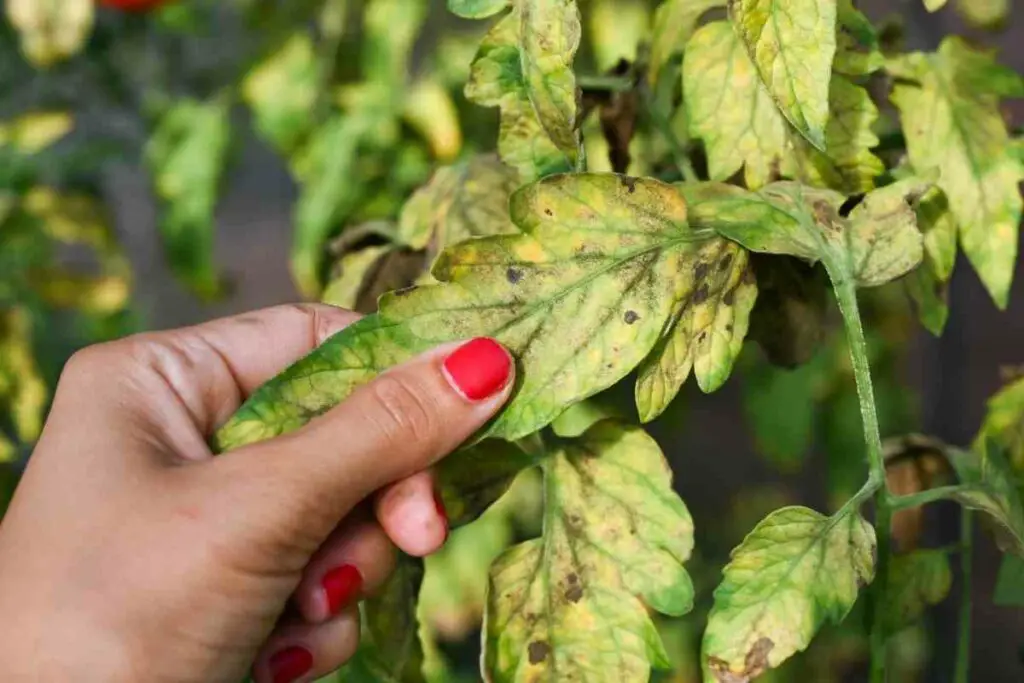
Where there is warmth or tropical conditions, this disease takes hold and spreads quickly among tomato plants.
Conversely, blight diseases are more common in regions where excessive moisture appears.
For example, states like Texas, Mississippi, and Louisiana are known for their high humidity, which can foster ideal blight conditions.
And according to the United States Department of Agriculture, bacterial spot disease is especially common in tomato plants grown east of the Mississippi River.
How can I identify diseases on my tomato leaves?
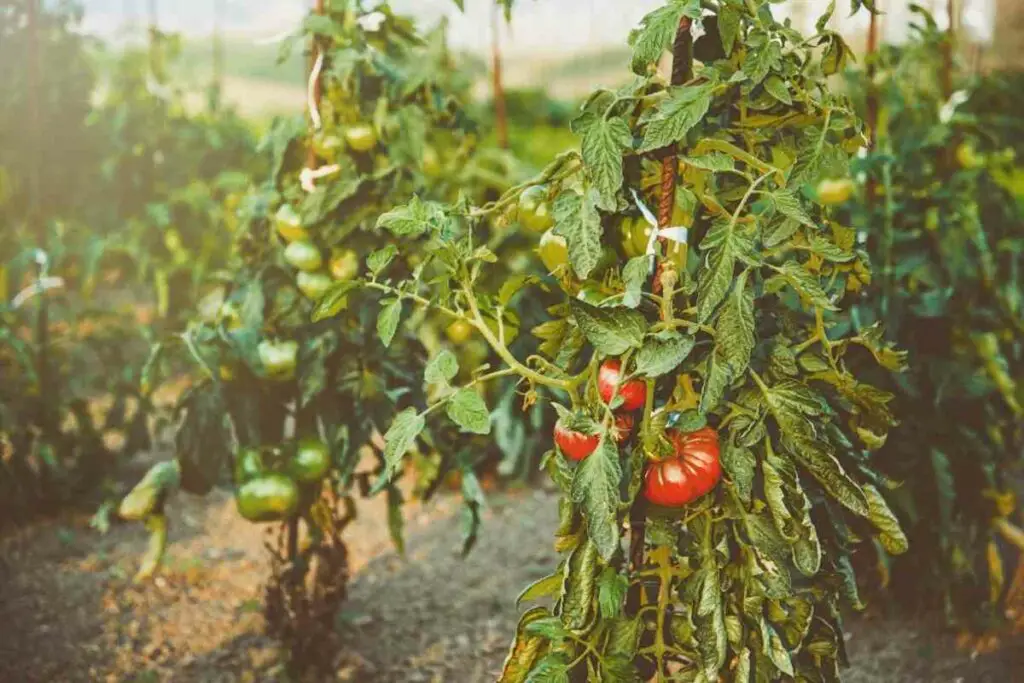
There are several key ways to identify what type of disease is spreading on tomato leaves:
- Look at the discoloration(s)
- Look at the shapes of the discoloration and disease
- Examine the undersides of the leaves
- See if the leaves are wilting or curling
- See if the leaves are dropping from the plant
- See if other parts of the tomato plant are being affected
Depending on the type of tomato leaf disease present, colors and appearances will vary.
What does a diseased tomato leaf look like?
A diseased tomato leaf could look a number of different ways, from curled to brown, yellow to black, or even powdery white to molded.
Some diseases even present as a dropping of leaves to the ground or a diseased selection of leaves closer to the base of the plant.
And in some cases, you might only see the disease on the underside of the tomato leaves.
You may not be able to identify what the specific disease is upon first glance.
However, you can use context clues, such as your region and weather patterns, to understand what’s going on.
What does tomato leaf blight look like?
Tomato leaf blight, being one of the more common tomato leaf diseases, is pretty easy to identify.
Blighted tomato leaves exhibit discolorations that look like bullseye shapes, and they are often black in the middle with yellow rings around them.
This is what you’ll see specifically with early blight.
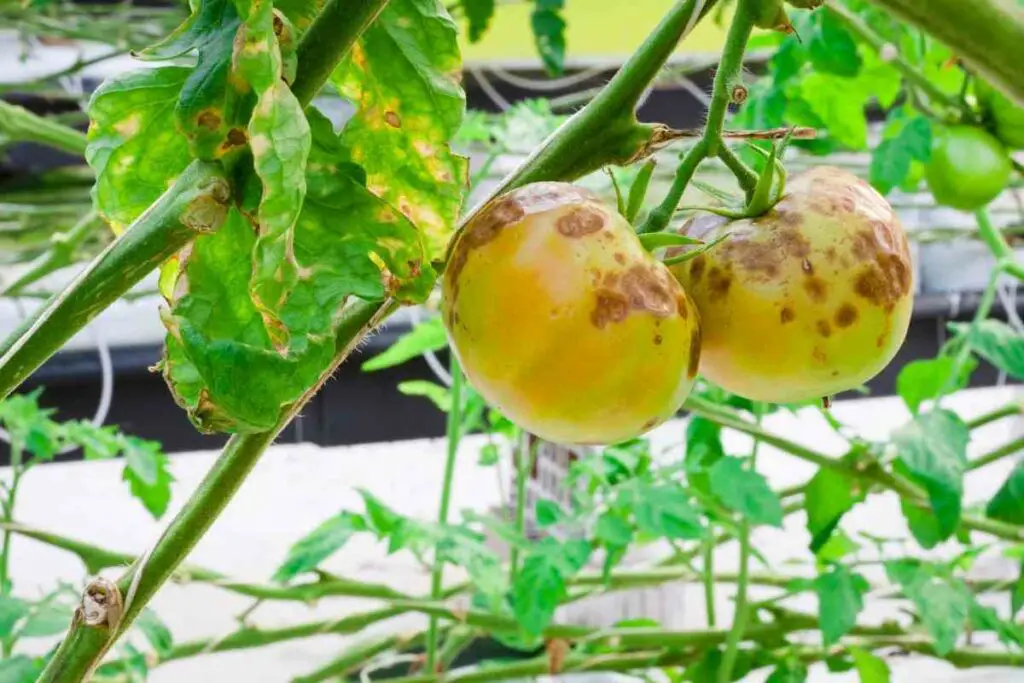
Early blight also causes darker spots to appear on the tomato plant stem. And the leaves may eventually turn completely yellow before dropping.
When it comes to late blight, you’re going to notice a fairly different change that doesn’t often involve the color yellow.
First, the leaves will become overly wet before turning brown. You can expect to see “lesions” on the leaves of the plant that start to turn brown over time, as well as lesions on the stem.
What are the first signs of tomato blight?
The most prominent first signs of tomato leaf blight include the following:
- Spots start to form on leaves that are closer to the ground
- Sports and discoloration starts on the part of the stem closest to the ground
- Leaves begin to turn yellow with time
- Small brown spots appear on leaf undersides
What does tomato leaf canker look like?
Canker appears in a much different way than tomato blight disease does.
There are two types of canker disease that affect tomato plants – bacterial and alternaria.
Bacterial canker shows up with one very distinct quality, and that is the presence of yellowish slime that oozes from the leaves.
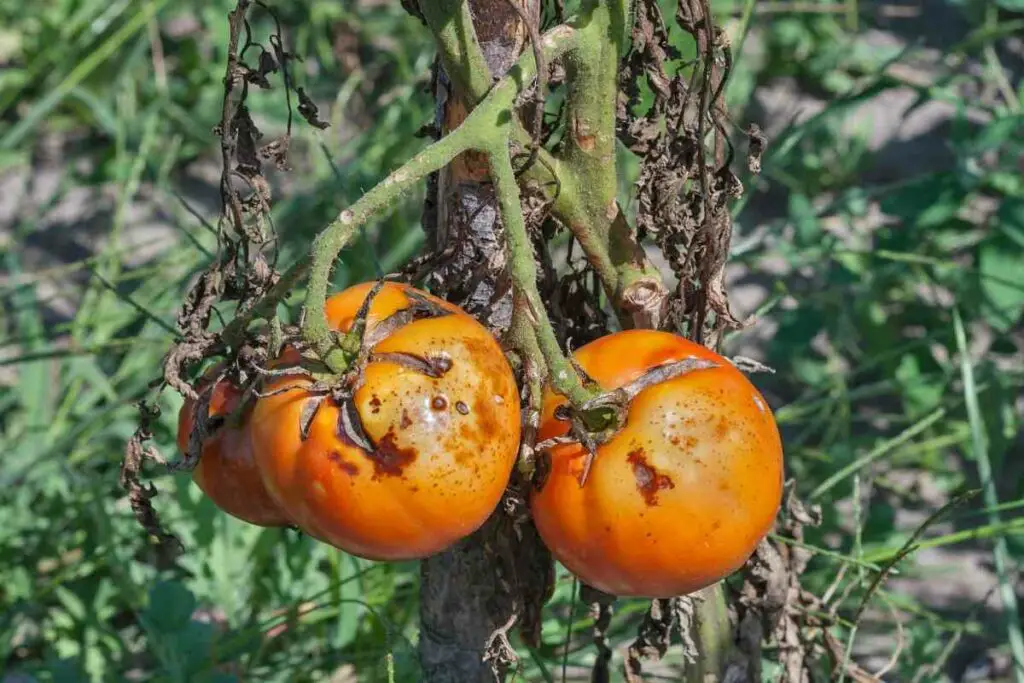
Bacterial canker also appears as leaf wilt near the bottom of the plant, yellowing and browning of leaves, and dryness.
When it comes to alternaria canker, the disease appears on all parts of the plant. The stem, tomatoes, and tomato leaves develop brown (and sometimes yellow) spots.
Alternaria canker causes tomato leaves to curl up and die. In some cases, the leaves may even drop from the plant entirely.
What does verticillium wilt look like?
Verticillium wilt is a tricky tomato plant disease, because many gardeners believe they can alleviate the problem with more watering.
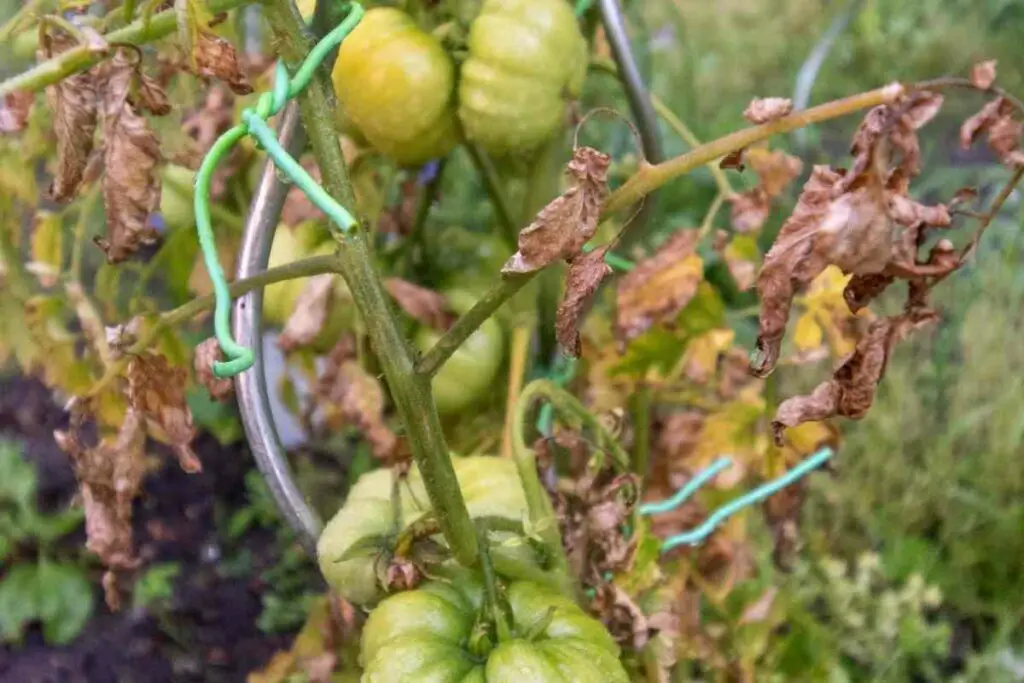
However, this disease will wilt the leaves until they can’t be revived. As a result, the rest of the plant will begin to suffer.
Watch Out! You may notice that the plant doesn’t grow as fast after this point, or the fruit ends up smaller than it should be.
Verticillium wilt also causes yellowing and eventual browning discoloration of the tomato plant leaves.
Even the stem will change color slightly, as the leaves curl up and appear brittle and dry.
What does powdery mildew look like?
Powdery mildew is one of the tomato plant diseases that is quite easy to identify.
It looks almost exactly as you would expect it to based on its name.
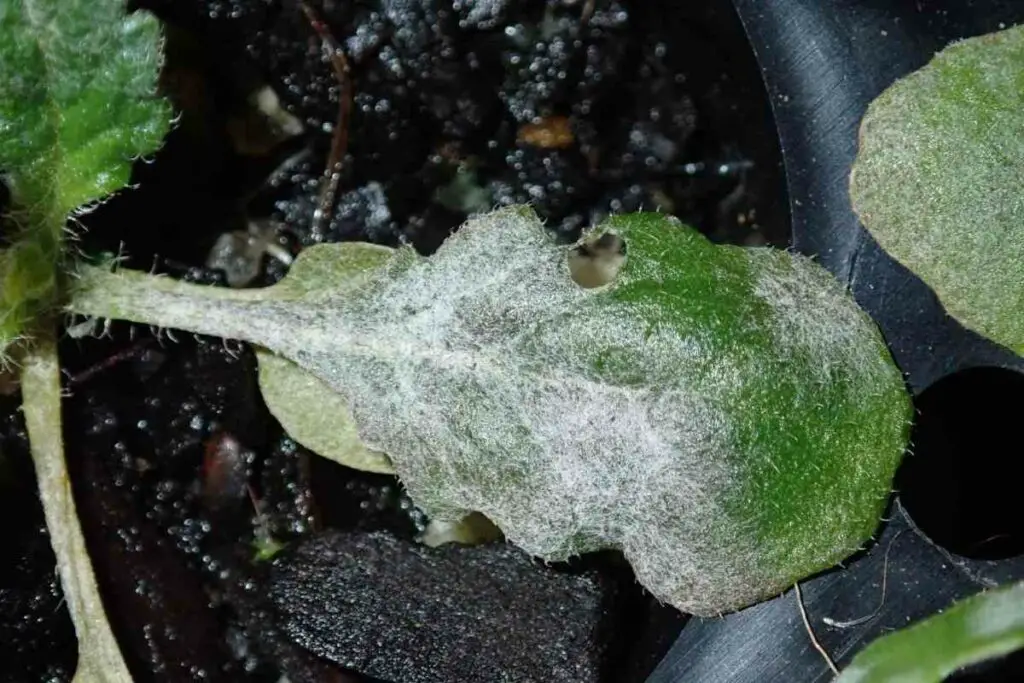
The namesake “powder” often appears on the leaves in multiple colors, but it’s usually gray or white. This fine powder may not be visible at first, but you can see it when you look closely.
But before this mildew powder appears, the leaves of the tomato plant will first develop yellow or yellowish-brown spots of discoloration.
Here’s a Tip – When identifying powdery mildew, examine the older plant leaves first. These will be the ones closer to the bottom and the stem. They will be the first area to develop the disease if it’s present.
What does bacterial speck look like?
Bacterial speck is a tomato plant disease characterized by a distinct leaf marking.
The leaves will start to develop small diseased marks that have a dark center and yellow ring around them.
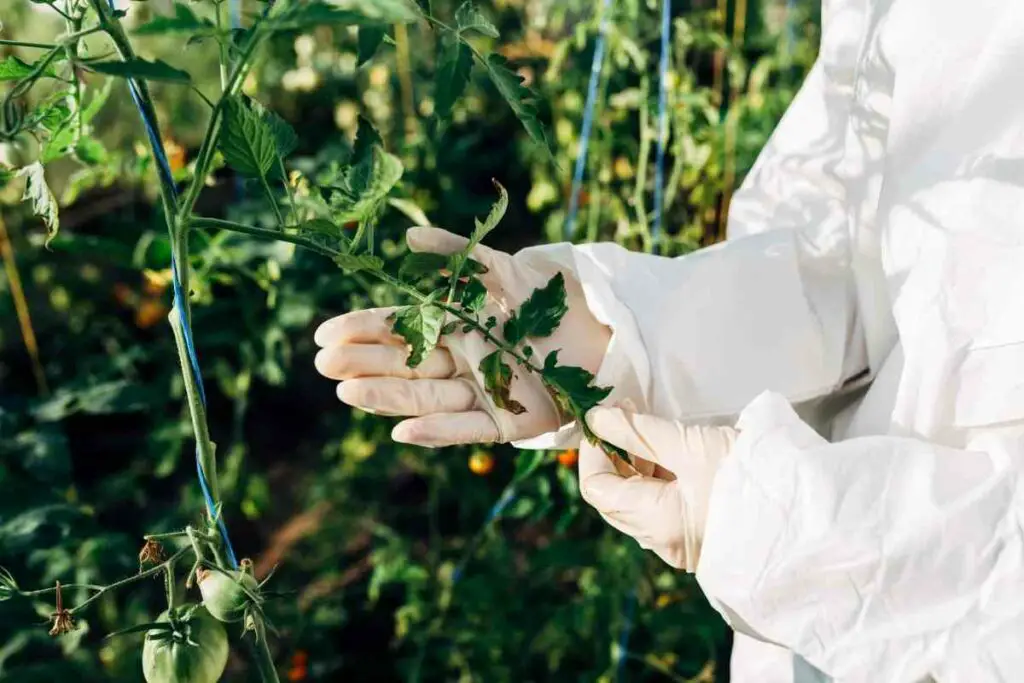
Since this is one of those tomato leaf diseases that worsens with too much moisture, you may be able to help identify it by the amount of dew on the leaves each morning.
Unlike other tomato diseases, this one doesn’t cause the leaves to wilt or curl.
They don’t entirely die and fall off, and the rest of the plant is usually unaffected by the necrotic markings.
What does leaf spot look like?
There are actually three different types of leaf spot disease that you should know how to identify:
- Bacterial leaf spot
- Septoria leaf spot
- Gray leaf spot
You can identify bacterial leaf spot by distinct holes in the leaves. These only develop after spots on the leaves turn brown or black, and they fall away with wetness.
Another characteristic of bacterial spot to note is what happens to the tomatoes themselves. They will develop small, dark scabs on the skin.
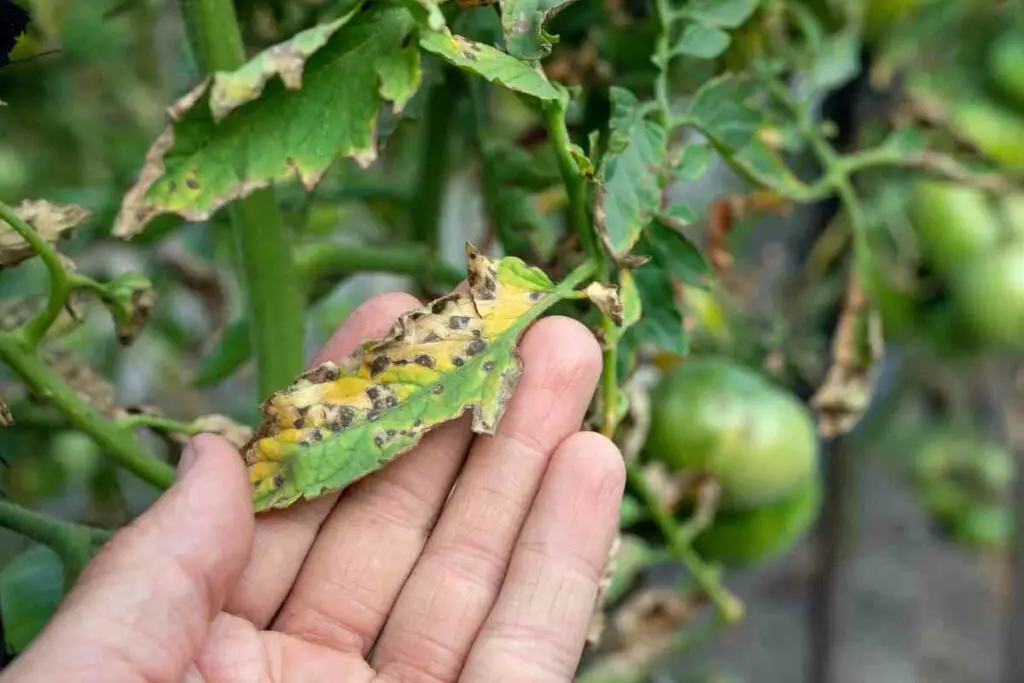
Septoria leaf spot looks quite different from bacterial spot.
While the affected areas share the same source – water-soaked tissue – the color of the markings is actually gray. The gray spots are circle-shaped and often have a ring of brown around them.
Check for septoria leaf spot on the leaves closer to the stem and ground first to identify the disease.
And gray leaf spot is one disease that you can identify by looking at the bottom side of the tomato plant leaves.
The undersides will form small dark spots that get bigger over time and eventually dissolve.
This is why you can sometimes use the presence of small holes to identify gray leaf spot. Gray leaf spot also sometimes appears as yellowing of the leaves and leaf dropping.
What does leaf mold look like?
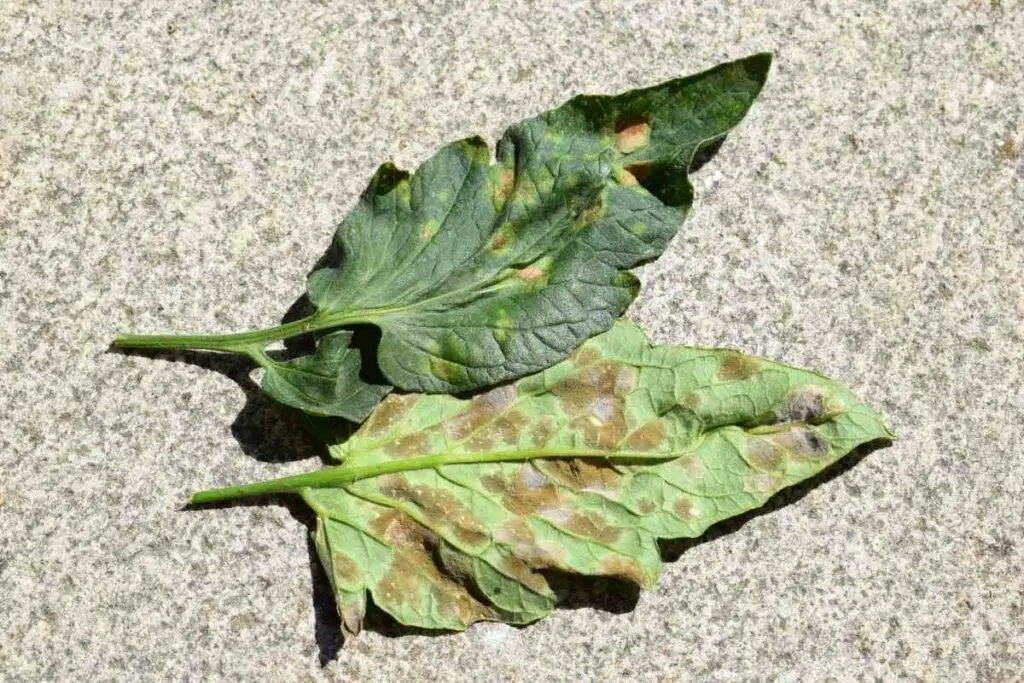
When identifying leaf mold on tomato plants, look out for the following signs:
- Mold spots on the undersides of leaves (sometimes purple in color)
- Yellowing of leaves
- Dropping of leaves
- Greenish colored markings on older plant leaves
- Development of a soft or papery texture to the leaves
Unlike other tomato plant diseases, this one doesn’t cause the leaves to develop holes or scabs. It also won’t affect the fruit of the plant.
How can I prevent tomato leaf diseases?
While tomato leaf diseases can be quite pervasive, there are a few things gardeners can do to get ahead of them.
But it’s important to note that tomato leaf diseases can actually remain in the soil from one growing season to the next, making it hard to prevent them from spreading to new crops.
Crop Rotation
Crop rotation can be somewhat effective at preventing the spread of tomato leaf diseases.
When the diseases originate in the garden soil, it’s important to move the tomato plants away from that infected soil to prevent the spread.
It’s recommended to rotate your tomato crops with other plants that aren’t vulnerable to these diseases.
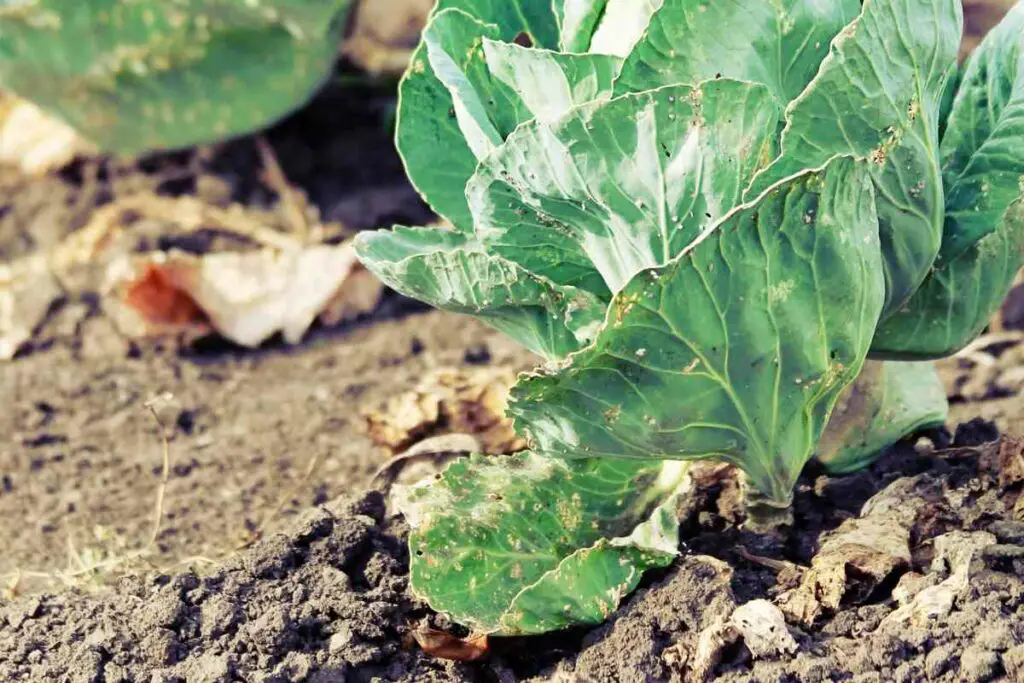
Consider rotating them with beans, cabbage, or corn crops, for example.
Crop rotation is an effective disease prevention method for the following tomato leaf diseases:
- Septoria leaf spot
- Leaf mold
- Leaf blight
- Bacterial (verticillium) wilt
Note that crop rotation is only effective to a certain extent, as fungi can live in soil for years, even without plants to infect.
But with time, and the absence of disease-susceptible plants, the soil can rid itself of the diseases.
Improve Gardening Circulation
Whether you’re growing your tomato plants in a greenhouse or in an outdoor bed, proper air circulation is essential.
Without enough airflow between the individual tomato plants and the leaves of the plants, diseases can take hold much easier.
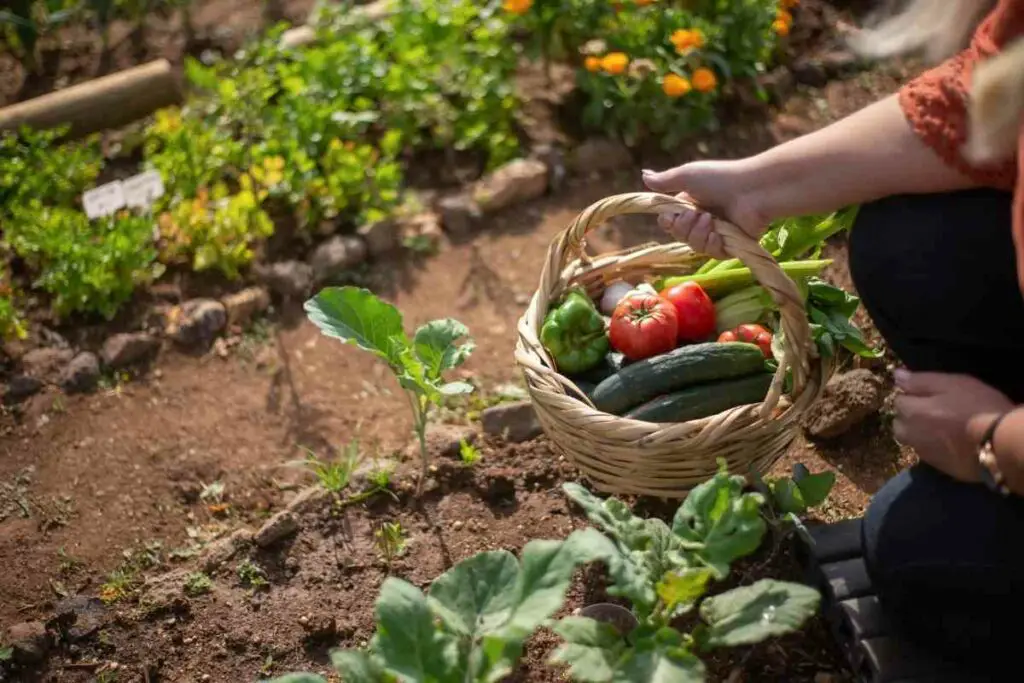
Some of the most effective ways to improve circulation in order to prevent leaf diseases include pruning the plants and spacing them adequately.
Tomato plants should be spaced anywhere between 1-2 feet apart, depending on the variety. For indeterminate tomato plants that get fairly large, you may even space them further apart.
As for Pruning – Getting rid of excess foliage can create more space for the leaves to breathe and not become overly wet. Just make sure to use sanitized pruning tools so that you don’t accidentally spread diseases from other plants in the process.
Improve Soil Drainage
Soil drainage can quickly become a problem in certain gardening environments, including the following:
- Potted tomato plants
- Soil that is too compact
- Direct, in-ground garden beds in clay-rich areas
And the problem with poor drainage is that it allows moisture to collect on tomato plants – the perfect condition for diseases to take hold and spread.
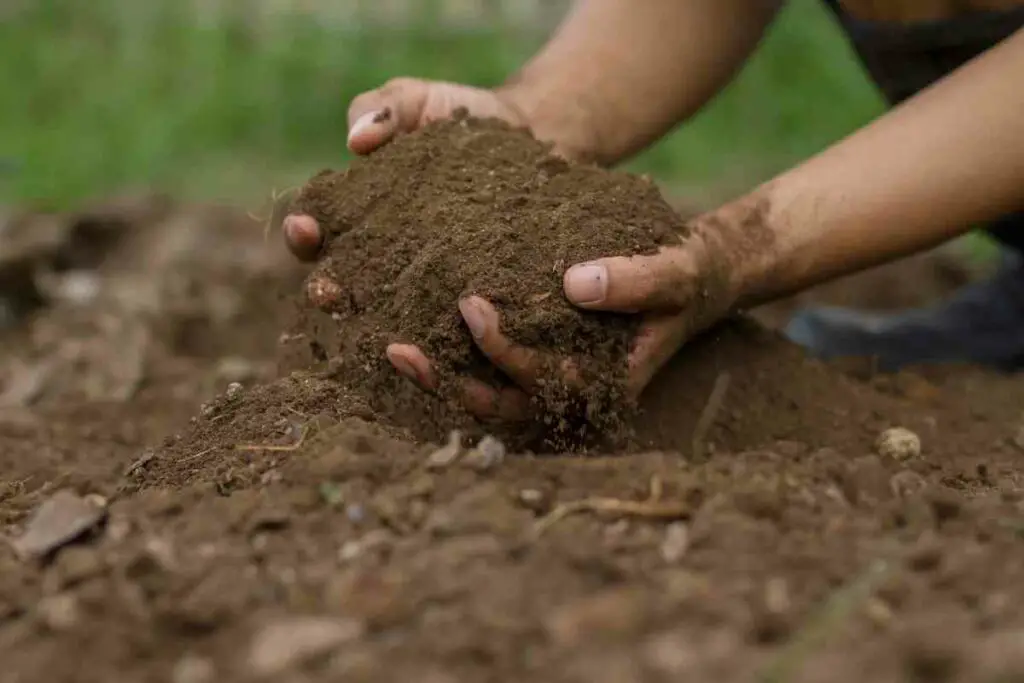
To improve soil drainage, make sure that you don’t tamp down the gardening soil too tightly when planting your tomato plants.
You can also improve drainage by opting for raised garden beds or adequately sized tomato plant containers.
These options are ideal because they won’t be impeded by thick clay soil under the surface.
How do I treat tomato leaf diseases?
With the above knowledge of prevention methods, you have a good shot at curbing tomato leaf diseases.
However, nature has a mind of its own. So it’s important to be aware of treatment options, too.
How do you get rid of tomato leaf blight?
The most effective methods to treat and rid your garden of tomato leaf blight include:
- Letting soil surface dry before re-watering
- Removing the infected plant matter from the garden
- Completely clean and sanitize all garden tools before use, every time
- Remove volunteer tomato plants and weeds from the garden
- Use only clean water (not irrigation water)
- Mulch the infected plants
- Maintain soil potassium levels
- Move potted plants to higher sun locations
- Use an appropriate fungicide
How do you get rid of other tomato leaf diseases?
Blight isn’t the only plant disease that you can treat.
The other diseases, such as speck, spot, and wilt, can be treated with similar methods.
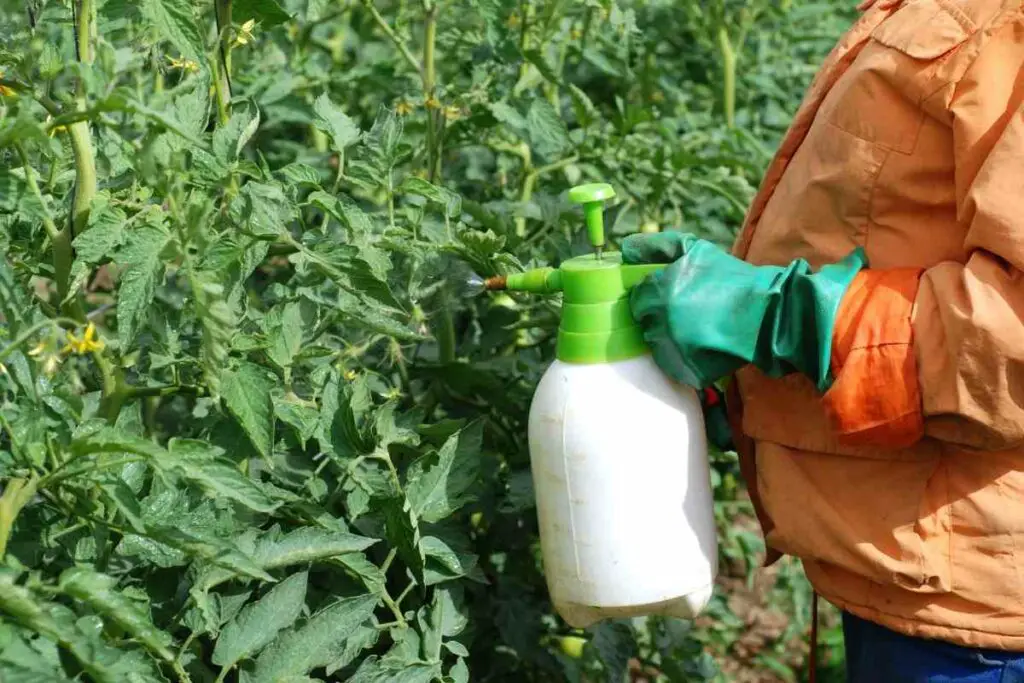
Fungicides are usually the most effective option, although this may not be preferable for gardeners with stricter environmental concerns.
When Possible – Always remove the affected plant matter from the tomato plants and get it as far away as possible from the soil.
What is a natural remedy for tomato blight?
Natural options for getting rid of blight in the garden include mulching the plants.
This process reduces the buildup of soil moisture and prevents the diseases from being able to grow as rapidly.
You can also trim the plants regularly, removing all diseased branches, fruit, and leaves before the disease spreads to the whole thing.
Make sure to remove them with clean tools and dispose of them far away from the gardening site.
What is the best fungicide for tomato blight?
The best fungicidal options for tomato blight specifically include Mancozeb and Chlorothalonil.
These options are especially effective when it comes to the late blight disease.
Conclusion
In order to prevent and treat tomato leaf disease, you can stay on top of proper irrigation, fungicide use, using resistant tomato plant varieties, and more.
Tomato leaf diseases are caused by different types of pathogen and fungal infections, such as the water mold pathogen Phytophthora infestans, which is involved in late blight.
There are several key ways to identify what type of disease is spreading on tomato leaves:
- Look at the discoloration(s)
- Look at the shapes of the discoloration and disease
- Examine the undersides of the leaves
- See if the leaves are wilting or curling
- See if the leaves are dropping from the plant
- See if other parts of the tomato plant are being affected
Depending on the type of tomato leaf disease present, colors and appearances will vary.
- How to Dry Basil Leaves: A Professional Guide
- Is an Avocado a Fruit or Vegetable? Simple Answer and Explanation
- Does Pineapple Have Seeds? Exploring the Anatomy of Pineapples
- Blooming Through Winter: Can I Grow Vegetables Indoors in the Winter?
- What Can You Grow in a Greenhouse All Year Round: A Guide to Year-Round Greenhouse Gardening
- Are Blueberries Blue? Debunking the Myth of Their Color












